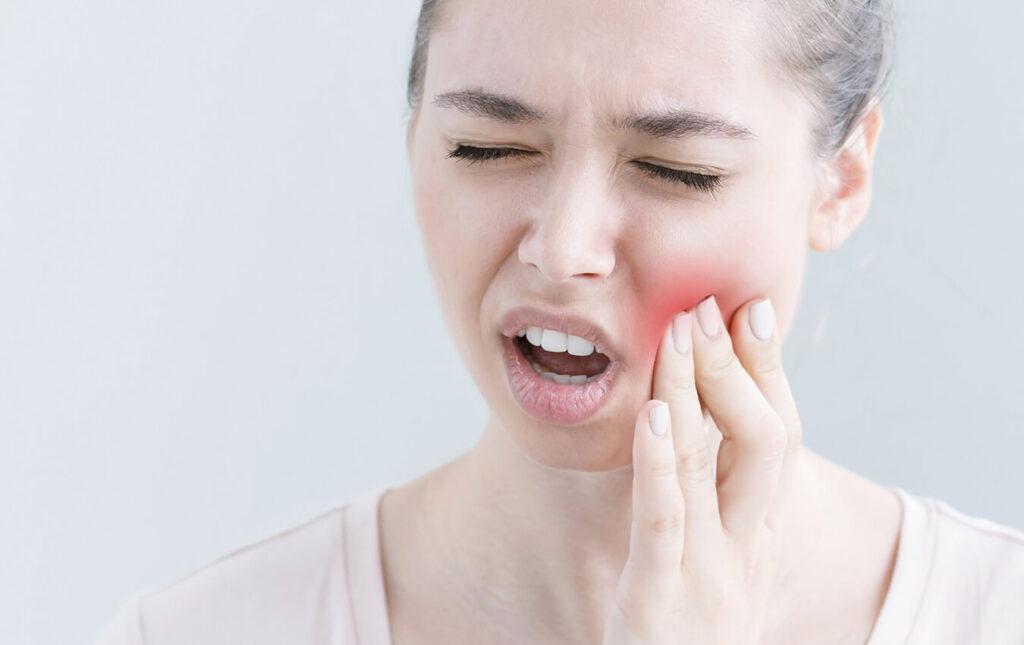
TMJ was virtually unknown to the average person until about 15 – 20 years ago. Now it is routinely recognized and treated as much to the relief of many people who suffer from jaw and facial pain. TMJ actually refers to the “temporomandibular joint,” which is located below the ear and connects the jawbone to the skull. The TM joint is one of the most complex in the body and actually is a collection of nerves, muscles, cartilage and fluids. TMJ disorders, called TMD, affect roughly 10 million people in the U.S., according to the National Institutes of Health, and 90% of them are women.
An article published in TMJ Science1, reported that TMD really is not one but a group of disorders involving muscle conditions, arthritis conditions and the jaw joint. Whichever one is affected, it could impact a person’s ability to talk, smile, chew or yawn. It can be especially uncomfortable during dental procedures which require that your mouth be open for a prolonged period of time.
TMD Symptoms:
Symptoms differ between people, depending on what parts of the joint and surrounding tissues are involved, but the universal symptoms of TMJ disorders seem to include:
- Headaches (reported by 80% of TMJ patients)
- Ear, jaw, face, neck and shoulder pain
- Facial swelling
- Difficulty chewing and swallowing
- Popping or cracking when you yawn
- Pain or difficulty opening your mouth wide
- Tinnitus (ringing in the ears)
- Locking of the jaw
Any of these symptoms can be extremely painful and many people suffer from a TMD over a prolonged period of time.
TMD Causes:
There are a number of causes for TMJ disorders. According to the Mayo Clinic, TMD can be the result of a number of disassociated causes – anything from an injury to the jaw, to osteoarthritis or rheumatoid arthritis, to severe stress or anxiety. If you feel you have any of the TMD symptoms, take stock and see if you do any of these things:
- Clench your jaw or grind your teeth – either when you are stressed or angry.
- Constantly chew gum or a pen, or anything else.
- Get into positions at your work or a hobby that put stress on your neck and shoulder muscles, such as hunching over the keyboard of your computer or bending over equipment.
Studies are still being conducted on the causes of TMD in the hopes of finding better and more effective treatment. It is suspected that some kinds of TMD may be genetic.
TMD Treatments:
Reports show that some TMD goes away on its own, but a lot of the time it doesn’t. If you have TMD that persists, you should certainly consult your dentist or doctor. S/he will likely start with the least invasive form of treatment, depending on your symptoms and other considerations. Here are some of the most conservative TMD treatments currently available:
- Stop doing what hurts. If there is a habitual behavior contributing to your TMD pain, like gum chewing, you will be advised to stop it immediately. Other activities or behaviors may be harder to eliminate if they are part of your livelihood. However, changes of posture or equipment could be tried.
- Mild stretching exercises or massage. Jaw, neck or shoulder exercises or massage, that you can do yourself, could help relieve the stress on those muscles.
- Medication. Nonsteroidal, anti-inflammatory medication (such as Advil and Ibuprofen) often brings relief.
- Biteplate or nightguard. These are mouth appliances you would use continuously or just at night, depending on your symptoms. Usually they are simply molded plastic devices that fit into your mouth to keep your jaw relaxed and aligned.
- Heat and cold. As with other muscular and joint problems, the application of moist heat or ice can often relieve inflammation and pain.
If your TMD symptoms don’t respond to any of these, or any other, non-invasive treatments, there are more serious procedures that have proven helpful in many cases.
Dental treatment.
This could be something like improving your bite by balancing the biting surface of your teeth or replacing missing teeth or broken appliances.
Corticosteriod injections.
These are injections of steroid medications directly into the jaw to relieve inflammation and pain.
Surgery
Your dentist or doctor may recommend you see an oral or maxillofacial surgeon. There are surgical procedures that have been effective in dealing with the temporal bone problems.

